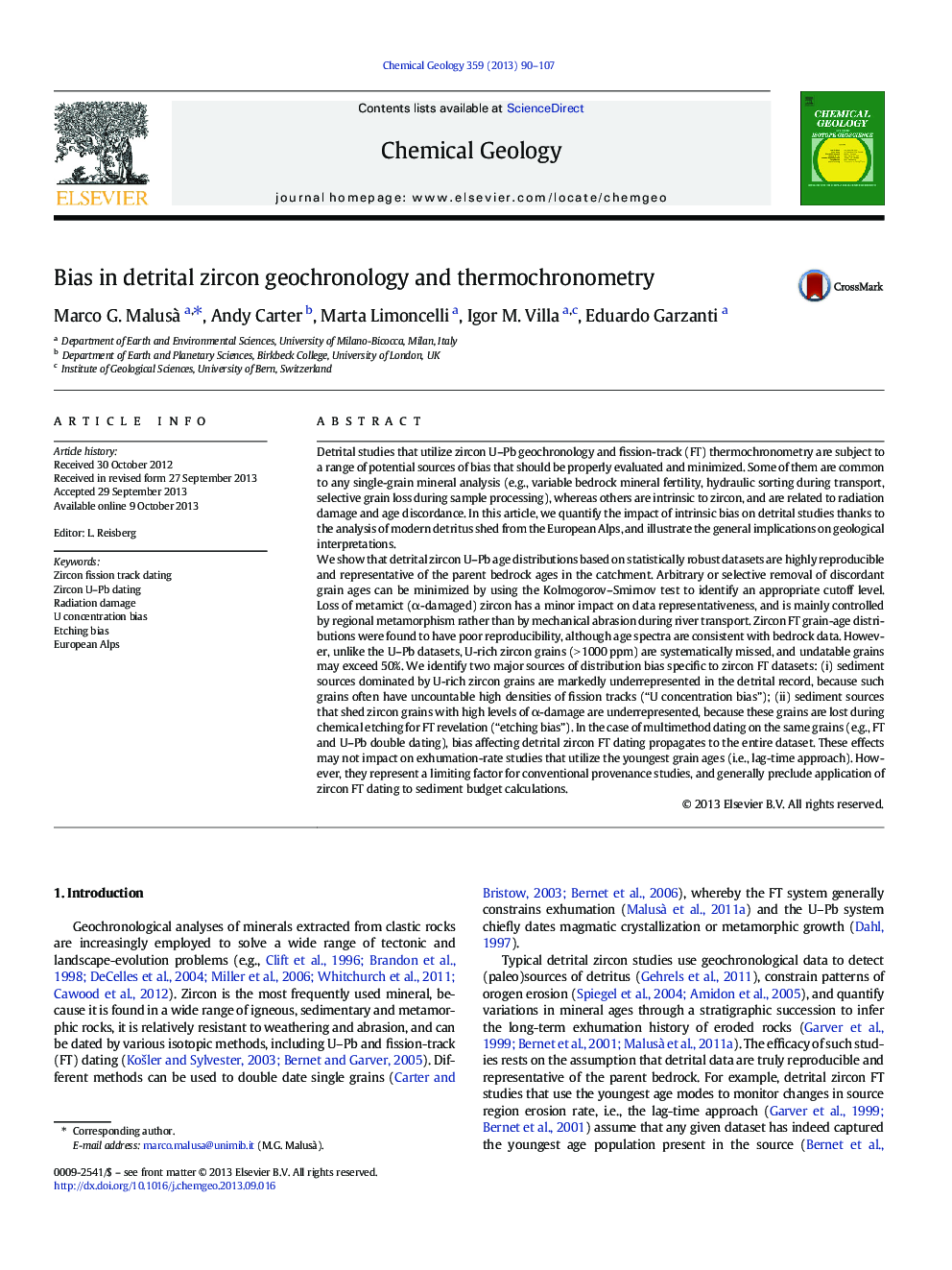| کد مقاله | کد نشریه | سال انتشار | مقاله انگلیسی | نسخه تمام متن |
|---|---|---|---|---|
| 4698917 | 1637610 | 2013 | 18 صفحه PDF | دانلود رایگان |

• Metamict zircon is selectively destroyed during metamorphism of source rocks.
• River transport is not effective in promoting rounding of zircon grains.
• The K–S test can be used to set the cutoff level for discordant U–Pb ages.
• U concentration and etching bias are specific to zircon fission-track datasets.
• Zircon grains undatable by fission-track analysis exceed 50% of a dataset.
Detrital studies that utilize zircon U–Pb geochronology and fission-track (FT) thermochronometry are subject to a range of potential sources of bias that should be properly evaluated and minimized. Some of them are common to any single-grain mineral analysis (e.g., variable bedrock mineral fertility, hydraulic sorting during transport, selective grain loss during sample processing), whereas others are intrinsic to zircon, and are related to radiation damage and age discordance. In this article, we quantify the impact of intrinsic bias on detrital studies thanks to the analysis of modern detritus shed from the European Alps, and illustrate the general implications on geological interpretations.We show that detrital zircon U–Pb age distributions based on statistically robust datasets are highly reproducible and representative of the parent bedrock ages in the catchment. Arbitrary or selective removal of discordant grain ages can be minimized by using the Kolmogorov–Smirnov test to identify an appropriate cutoff level. Loss of metamict (α-damaged) zircon has a minor impact on data representativeness, and is mainly controlled by regional metamorphism rather than by mechanical abrasion during river transport. Zircon FT grain-age distributions were found to have poor reproducibility, although age spectra are consistent with bedrock data. However, unlike the U–Pb datasets, U-rich zircon grains (> 1000 ppm) are systematically missed, and undatable grains may exceed 50%. We identify two major sources of distribution bias specific to zircon FT datasets: (i) sediment sources dominated by U-rich zircon grains are markedly underrepresented in the detrital record, because such grains often have uncountable high densities of fission tracks (“U concentration bias”); (ii) sediment sources that shed zircon grains with high levels of α-damage are underrepresented, because these grains are lost during chemical etching for FT revelation (“etching bias”). In the case of multimethod dating on the same grains (e.g., FT and U–Pb double dating), bias affecting detrital zircon FT dating propagates to the entire dataset. These effects may not impact on exhumation-rate studies that utilize the youngest grain ages (i.e., lag-time approach). However, they represent a limiting factor for conventional provenance studies, and generally preclude application of zircon FT dating to sediment budget calculations.
Journal: Chemical Geology - Volume 359, 14 November 2013, Pages 90–107